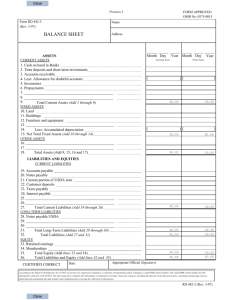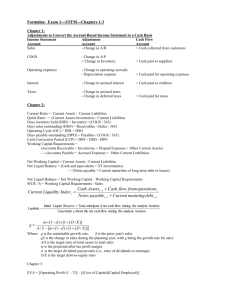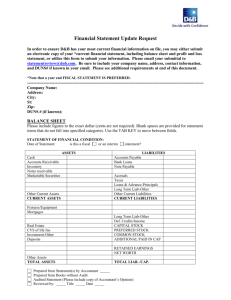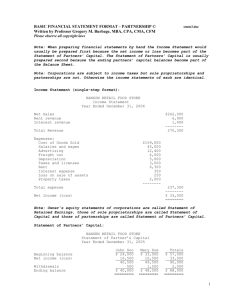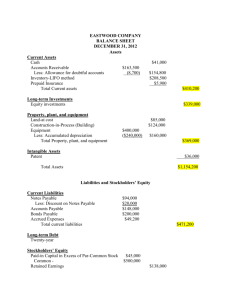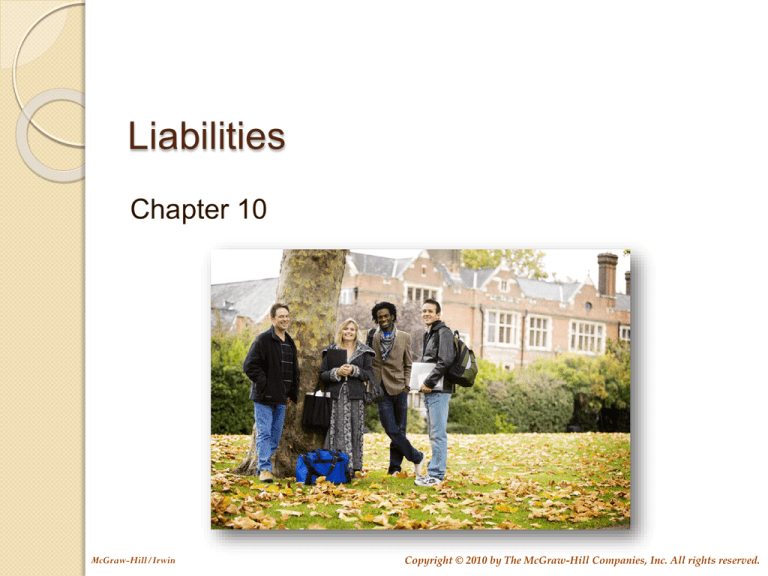
Liabilities
Chapter 10
McGraw-Hill/Irwin
Copyright © 2010 by The McGraw-Hill Companies, Inc. All rights reserved.
The Nature of Liabilities
Defined as debts or obligations arising from
past transactions or events.
Maturity = 1 year or less
Maturity > 1 year
Current
Liabilities
Noncurrent
Liabilities
10-2
Estimated Liabilities
Estimated liabilities have two basic
characteristics:
1. The liability is known to exist,
2. The precise dollar amount cannot be
determined until a later date.
Example: An automobile
warranty obligation.
10-3
Current Liabilities: Accounts Payable
Short-term obligations to suppliers for
purchases of merchandise and to others for
goods and services.
Merchandise
inventory
invoices
Office
supplies
invoices
Examples
Shipping
charges
Utility and
phone bills
10-4
Current Liabilities: Notes Payable
When a company borrows money, a note payable is
created.
Current Portion of Notes Payable
The portion of a note payable that is due within one year,
or one operating cycle, whichever is longer.
Current Notes Payable
Total Notes
Payable
Noncurrent Notes Payable
10-5
Accrued Liabilities
Accrued liabilities arise from the recognition of
expenses for which payment will be made in the
future. Accrued liabilities are often referred to as
accrued expenses.
Examples include:
1. Interest payable,
2. Income taxes payable, and
3. Accrued payroll liabilities.
10-6
Payroll Liabilities
Gross Pay
Net Pay
FICA Taxes
Medicare
Taxes
Federal
Income Tax
State and
Local Income
Taxes
Voluntary
Deductions
10-7
Unearned Revenue
Cash is sometimes collected from the customer
before the revenue is actually earned.
As the earnings
process is
completed
Cash is
received
in
advance.
Deferred
revenue is
recorded.
a liability account.
Earned
revenue is
recorded.
10-8
Long-Term Liabilities
Relatively small debt needs can
be filled from single sources.
Banks
or
Insurance Companies
or
Pension Plans
10-9
Long-Term Liabilities
Large debt needs are often filled by
issuing bonds.
10-10
Installment Notes Payable
Long-term notes that call for a series of
installment payments.
Each payment covers
interest for the period
AND a portion of the
principal.
With each payment, the
interest portion gets smaller
and the principal portion gets
larger.
10-11
Bonds Payable
Bonds usually involve the
borrowing of a large sum of
money, called principal.
The principal is usually paid
back as a lump sum at the end
of the bond period.
Individual bonds are often
denominated with a par value,
or face value, of $1,000.
10-12
Bonds Payable
Bonds usually carry a stated rate of interest,
also called a contract rate.
Interest is normally paid semiannually.
Interest is computed as:
Principal × Stated Rate × Time = Interest
10-13
Types of Bonds
Mortgage
Bonds
Debenture
Bonds
Convertible
Bonds
Junk
Bonds
10-14
End of Chapter 10
10-15


